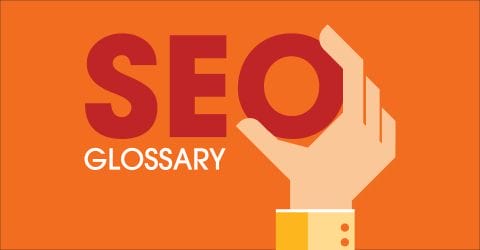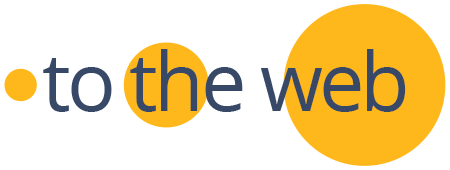SEO Glossary | Understand some of the terms commonly used in the SEO industry

This search engine glossary will help you better understand some of the terms commonly used in the SEO industry.
404 Error Page
The web page that displays when a user tries to view a page that no longer exists or the page file name has changed.
Abandonment Rates
Percentage of site visitors who view a page and then exit without linking to other pages on the site.
Alt tags
More correctly, these are ALT “attributes” (e.g. IMG is a “tag”). This is text coded in the HTML that associates words with web graphics.
Back Links
The number of links pointing to a website, “link popularity”.
Cache
Web content saved by the search engines in their indexes.
Call-To-Action
A way to engage the website visitor that encourages them to interact with the company.
Cloaking
At the same URL (web address) showing one page to a search engine spider and a different page to a human visitor. Frowned upon by search engines as deceptive, sites may be severely penalized by the engines if they use cloaking.
Crawler-based search engines
Engines that use automated software to index the billions of files online.
Conversion
When a website visitor takes the desired action, such as a sale or downloads a file.
CTR “Click Through Rate”
Percentage of users who click an online ad after viewing it.
Directories
Websites that list other sites by category, e.g. Yahoo! Directory.
DMOZ
A directory run by volunteers under the Open Directory project, www.dmoz.org.
Flash
Macromedia software that creates vector-based graphic animations with small file sizes for use online.
Framed site
Using a specific type of HTML code that places “pages inside pages”. Has significant disadvantages and a few advantages.
H1, H2 tags
In HTML, the code used to define a page title or subhead.
HTML Text
Text on a web page that is created using HTML (which can be indexed by the engines) as opposed to a graphic (which cannot).
Hyperlinks
A link from one web page to another (links can also point to another location on the same page).
Indexing / indexable
Online content that the search engines can index. Some content is not indexable (e.g. locked PDF files, text in a graphic).
JavaScript
A programming script used on websites.
Keyword Stemming
Google searches not only for your search terms but also for words that are similar to some or all of those terms, including plurals.
Link Popularity
The number of links pointing to a website.
Meta Description
“Hidden” HTML code that contains a descriptive sentence or two about the web page.
Natural Listings
That part of the search engine results that are not paid for, typically in the central area of the results page.
Off-The-Page
Factors considered by the search engines when ranking a page that are not part of the web page, e.g. backlinks.
On-The-Page
Factors considered by the search engines when ranking a page that are part of the web page, e.g. text content, title text, etc.
Organic Listings
See “Natural Listings”
Page Rank
Devised by Google, it measures not only how many links point to a website, but the “quality” of the sites providing the links.
Page Views
The number of requests to view a specific web page in a specific time frame (the same person could make multiple requests).
Paid Inclusion
Paying money to be listed in a search engine or online directory.
Paid Placement
Paying money to have an advertisement shown on a search engine results page.
PDF
Portable Document Format created using Adobe Acrobat software.
Phrase Match
Performing a search with quotation marks around the phrase so that the search results will show web pages with the exact phrase.
Pop-up Ads
A form of online advertising that opens a new web browser window to display advertisements.
PPC “Pay Per Click”
Paying a small amount each time a user clicks on an online ad.
Redirect
A file on the server indicating that the requested page has permanently (301) or temporarily (302) been moved to another location.
Robots.txt
A text file that instructs the search engines about pages or directories to exclude from its database.
ROI “Return on Investment”
How much revenue is generated compared to how much was spent on a marketing campaign
Search Engine Marketing (SEM)
The practice of marketing and advertising through the search engines.
Search Engine Optimization (SEO)
Designing a website so that it ranks highly in the search engines when someone searches for specific phrases related to the site.
Search Engine Rankings
The position a site has on a search results page when a specific phrase is searched for.
Search Engine Referrals
Visitors who arrive at a website after clicking a link on a search engine results page.
Search Engine Results Page (SERP)
The page that displays in a search engine when a specific phrase is searched for.
Search Term
The word or words entered by the user into the search engine.
Similar Pages
Identifies sites that the search engines think are the same theme.
Title Tag
In HTML, an area where text is placed that shows at the very top of the browser window. Search engines consider this area critical.
Unique Visitors
The number of individuals who visit a website during a specific time (the same person visiting twice is only counted once).
Web Spider
Software that browses the Web in an automated manner and keeps a copy of visited pages in its database. Also known also as a crawler.
Webinar
An online seminar that may contain audio and video.
Search Engine Saturation
The number of web pages that a search engine has indexed from your website.
We make content audits painless
Large websites tend to grow messy and inefficient over time. Outdated or low-quality quality content rarely gets any visibility and not only adds bloat to your site, but negatively affects your UX and SEO success.
So, if you haven’t done it before, it’s time to conduct a content audit to identify these ghost town pages, and then, revise or remove them.
It's content inventory time - start your own audit!
Content Inventory & Audit » Step-by-Step Guide to Running Your 1st Audit
Rosemary Brisco
AI Training Videos
AI Consulting and Training
Master today’s most effective productivity tools.
ToTheWeb ensures your route to capitalizing on the immense power of AI is fast and efficient. Our AI consulting and training programs will quickly enable your marketing team to adopt solutions to optimize operations and boost performance.
Learn about our generative AI and ChatGPT consulting and training programs


